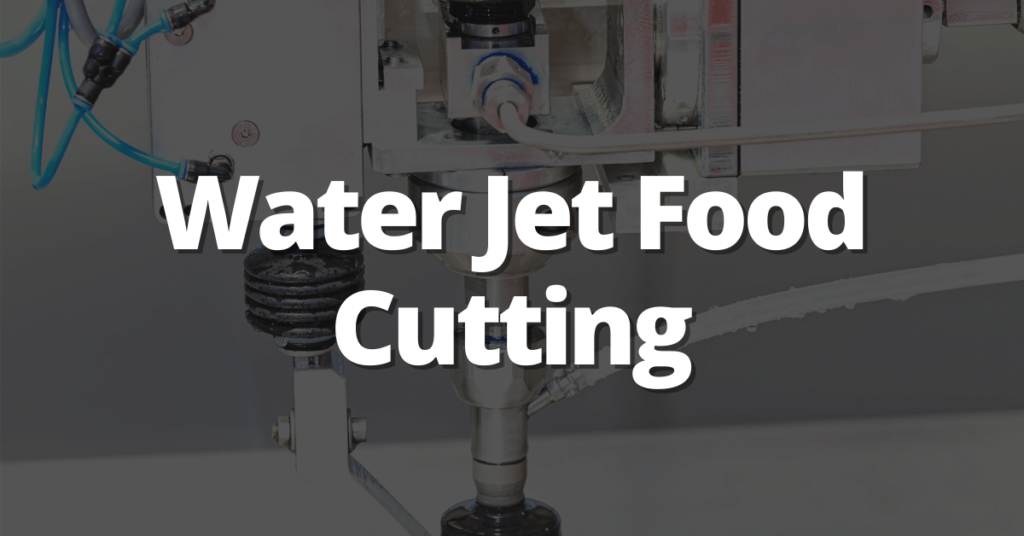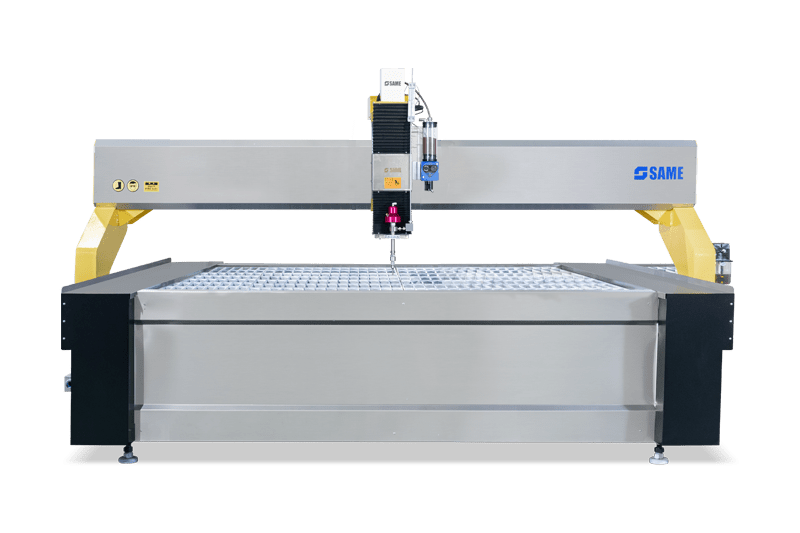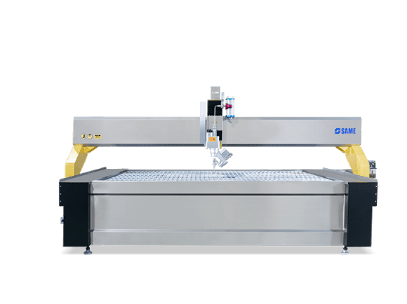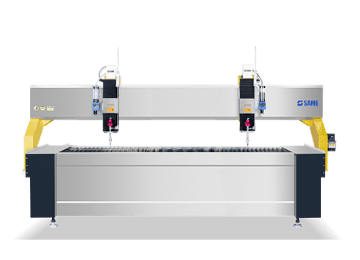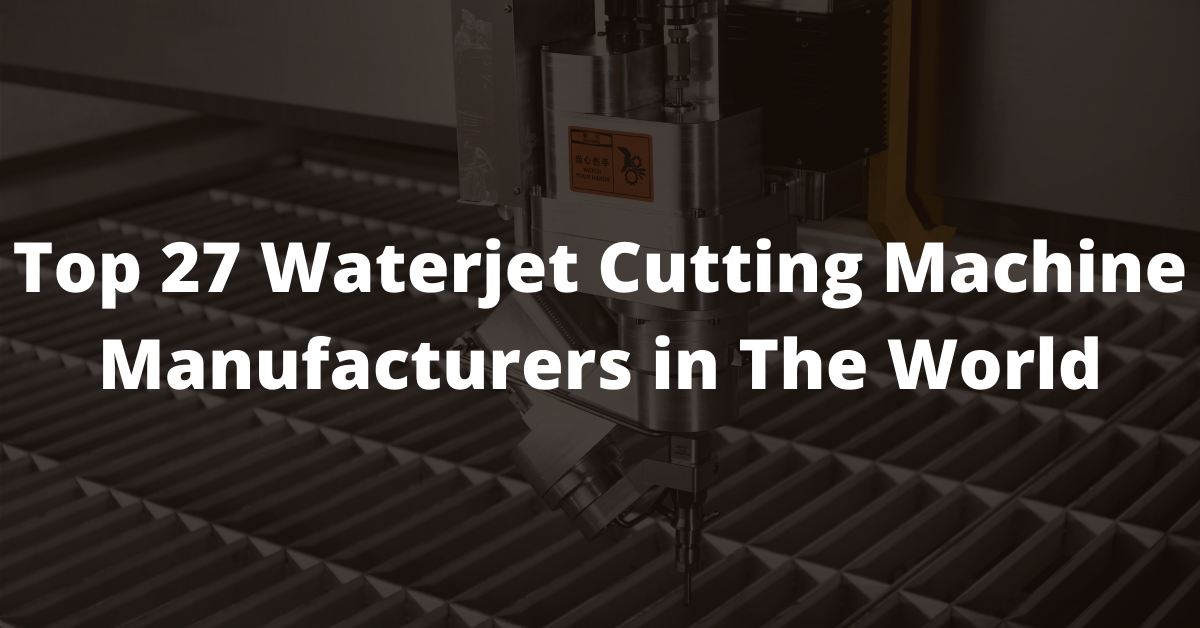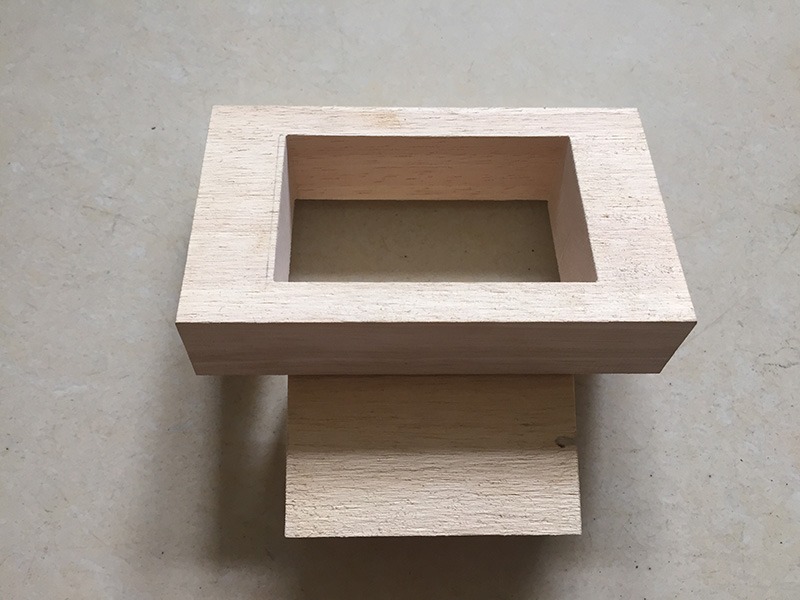Yes, water jet food cutting is a much more efficient process than traditional blade cutting in terms of hygiene, precision, maintenance, energy savings, as well as cost-cutting. It is also a food and drug administration approved process, which guarantees the safety of its use in food industries. Pioneers in the food industry are beginning to recognize this, leading to the growing popularity of water jet cutting in food industry.
How Exactly Does Water Jet Food Cutting In Industries Work?
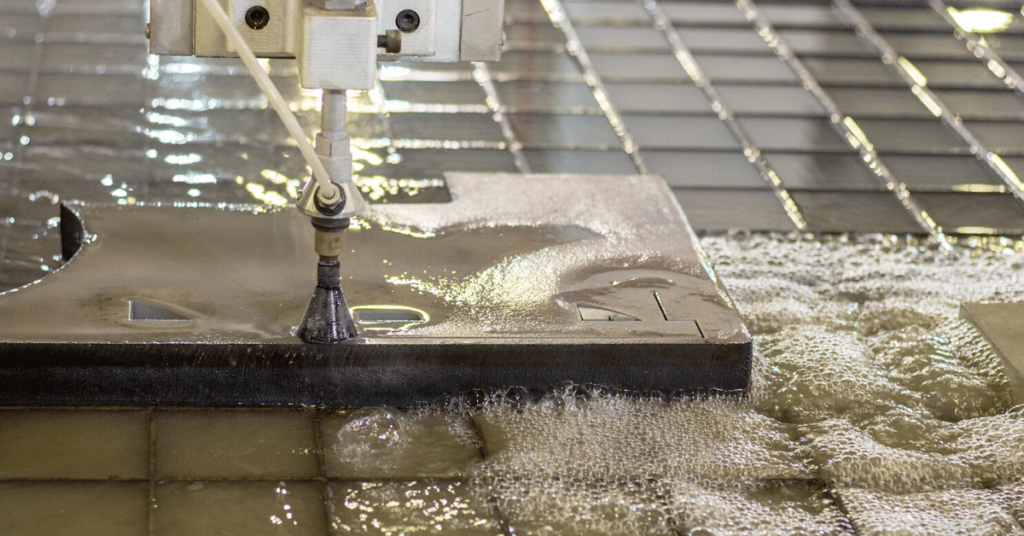
To understand the technology behind water jet cutting, it’s necessary to look at the major components that make up the water jet food cutting machine:
- Control Unit: This is the software interface using which the operator can control or direct the movement of the cutting head.
- Waterjet Table: Waterjet tables consist of a strong surface, usually made of powder-coated steel, on which the food items are placed for cutting.
- X-Y Traverse System: This is an X-Y motion arm that allows the nozzle to move along the defined path smoothly.
- Pump: The pump supplies steady and pressurized water flow for the cutting process to continue smoothly.
- Water Jet Nozzle: Inside this nozzle, high-pressure water passes through a fine gem orifice, usually diamond or ruby, creating a jet of water. Depending on the industry, abrasives and a ceramic mix are blended with the water to create a high-speed erosive water jet that can cut through most materials with ease. In the food industry, only purified water is used for creating the high-pressure jet.
Recommended: What Materials Can a Waterjet Cut?
- Catcher Tank: The catcher tank neutralizes the energy of the water jet after it is done cutting the material.
What Are The Benefits Of Water Jet Food Cutting Over Traditional Blades?
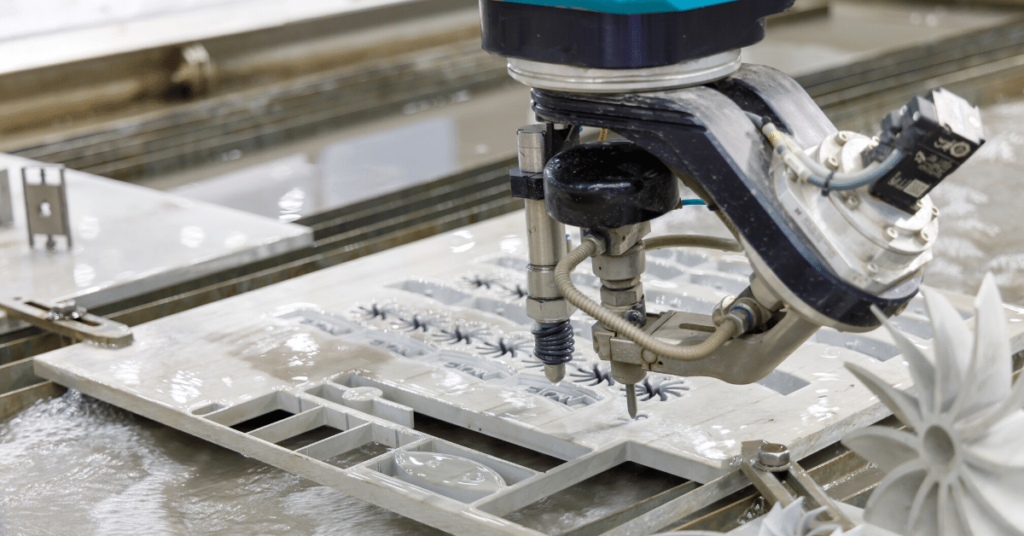
- Portion Control
Portioning is an essential function in the food industry. Every individual portion needs to be equal in size and weight. If that’s not done properly, there might be issues with packaging later on. Water jet food cutting is high on precision and turns out identical portions with negligible effort.
- No Heat Damage
Water jet food cutting is a cold cutting process, which means that it does not generate a lot of heat while operating. High heat in traditional blade cutting systems can wear down the machine parts faster, warp them, and lead to inaccurate cuts. All these issues and related expenses can be avoided with water jet cutting.
- Improved Hygiene
Only a pure water cutting process is used in the food industry. This means that water in the jet has been purified thoroughly, sometimes using advanced methods like deionization and reverse osmosis. This ensures that it does not contaminate the food surface that it touches. In fact, this is way more hygienic than traditional blade cutting systems since blade surfaces are susceptible to bacterial presence.
The use of blades also increases the risks of cross-contamination if the industry processes different kinds of food products. Water jet cutting uses a continuous jet of water, and so it can be used seamlessly across different kinds of food without any cross-contamination.
- Longer Shelf Life
Because of the enhanced hygiene and sanitation, and also the elimination of cross-contamination, the food items cut with water jet usually have a longer shelf life. This can be observed especially with fresh produce, which show minimal discolorations or oxidation if they are cut with a water jet.
- Precision in Shape Cutting
In the food industry, there’s often a need to cut very specific and custom shapes. It can be quite challenging with traditional blades, and this often limits designs. The extremely small kerf offered by the water jet cutting technology ensures that intricate shapes can be achieved with high precision. There is no smearing and no need to rework the edges.
Also Read: 6 Benefits of Water Jet Cutting in Food Industry!
This precision actually one of the another advantage. The small kerf means that the cutting edge has a lower surface area. This generates very little scrap while portioning or cutting and minimizes waste to a large extent.
- Time Saving
Traditional blade cutting systems involve a lot of maintenance when it comes to sharpening or replacing the cutting surfaces. With the pure water cutting process, no blades are used. Hence, no time needs to be wasted on sharpening dull blades or replacing old ones.
The absence of blades also means that no extra time needs to be devoted for cleaning or purification of the cutting surfaces. The water jet is already purified and ready for use on food items.
Traditional blades come with diverse blade kerf specifications. To put it simply, different blades are used depending on how thin each portion needs to be. So, a lot of time is spent switching out blades to suit the purpose. Water jet cutting can save time with adjustable kerf.
- Long Term Cost Reduction
Maintenance of blades in traditional cutting systems is not only time-consuming but also expensive. Water jet cutting seems like an expensive option while installation, but it is way more versatile.
Must Read: How Much Does Waterjet Cutting Cost?
This ensures that you get superior cutting at reasonable operation expenses. This way, cost-effectiveness is guaranteed in the long term.
- Enhanced Operator Safety
Water jet food cutting relies on software for motion control, nozzle positioning, and system controls. This means that the technician stays at a safe distance, which ensure the safety and reduces the risk of accidents and injuries.
- Eco-friendly Process
The water and abrasives, if any, used in a water jet food cutting system are recyclable. Besides, the process does not release dust and slag waste that could pollute the environment. All of these, paired with minimal scrap generation, make this one of the most eco-friendly and energy-efficient cutting processes.
What Type Of Food Items Can Be Cut Using A Waterjet?
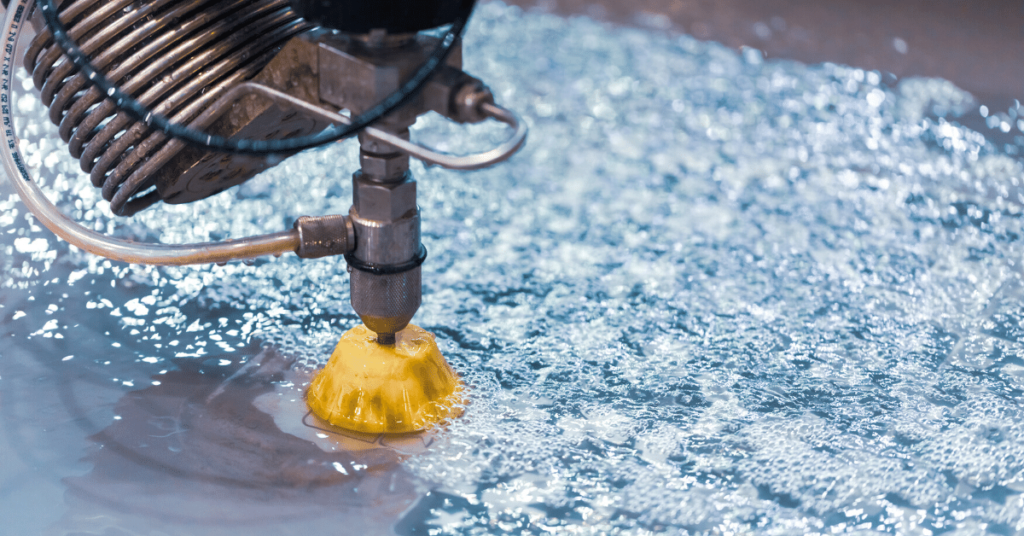
Water jet cutters have a number of useful applications in industrial food processing, but they can be divided into three categories:
- Portioning Ready Food – At bakeries and other ready food industries, water jet cutters are used to portion pastries, pizzas, sandwiches, cakes, cheese, cereal bars, and candies.
- Cutting Frozen Food – Water jet cutting meat, poultry, bacon, or fish is quite a common application. Sometimes water jet food cutting is also used to prepare thinly sliced items like french fries.
- Chopping Fresh Produce – Cutting produce such as romaine lettuce, celery, asparagus, and green beans is common. Even fruits are cut or tipped with the use of water jet cutters.
What Are The Diverse Applications Of Waterjet Cutting In Food Industries?
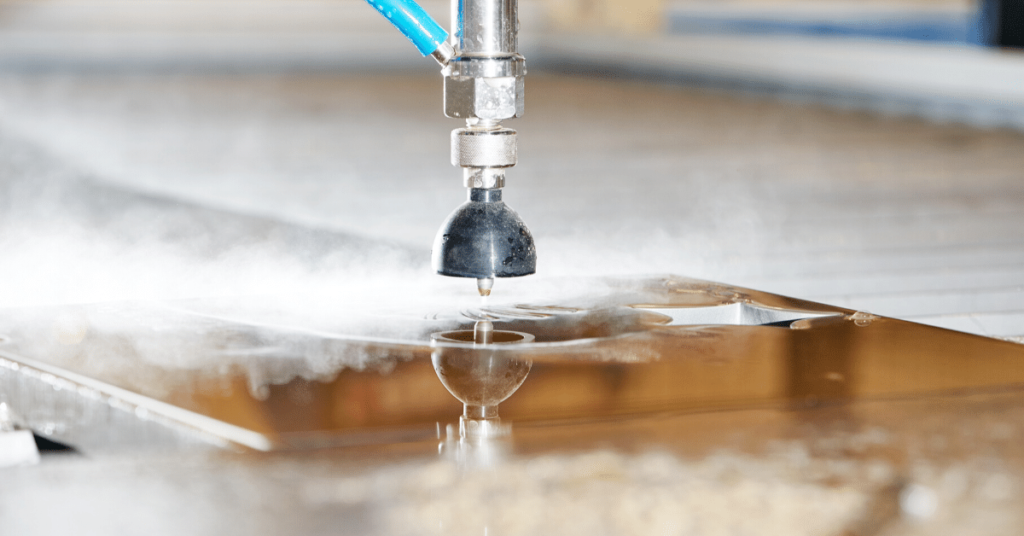
- Food Production: Preparation, shape-cutting, and portioning of baked goods and snack items like cake, chocolates, granola bars, biscuits, and even dried fruits
- Food Processing: Water jet cutting vegetables or fruits, waterjet meat cutting or cutting of poultry and fish, and portioning of all kinds of frozen food
- Food-related Equipment: Separation of thin packaging material like aluminum foil
- Food-Handling Machinery: Creating manufacturing process components such as packaging equipment and liquid filling equipment
How Economic Is Water Jet Food Cutting Compared To Traditional Blade Cutting Systems?
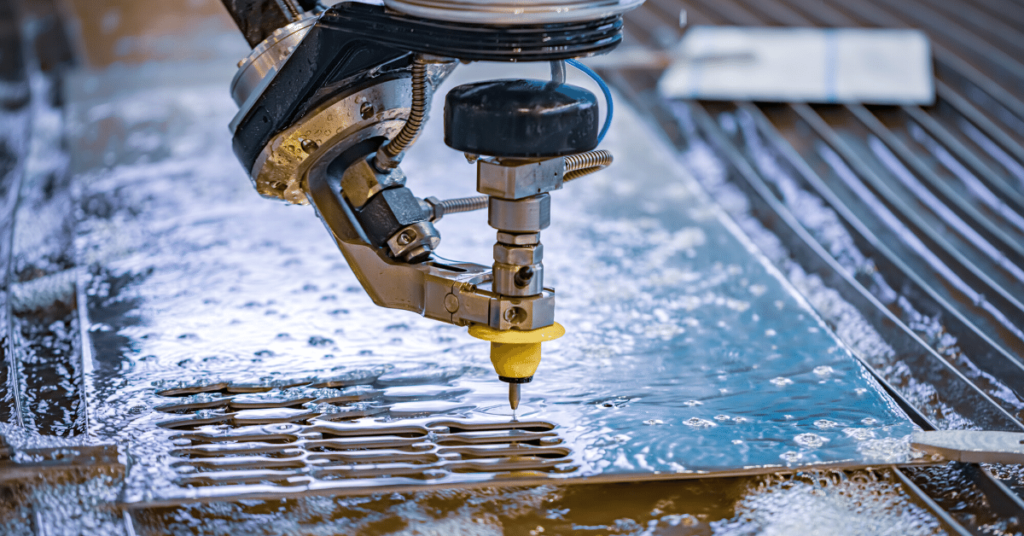
The installation and operation cost of the water jet cutting machine may vary based on the following specifications:
- Type and quality of machine
- Material to be cut
- Thickness of the material
- Programming and control system
- Water supply
- Power supply
- Nozzle replacement
Generally speaking, the operating cost can be anywhere between $15-$30 per hour. It is close to the cost of operating a traditional blade system, which is usually a minimum of $24 per hour.
However, the blade cutting machines lead to significantly higher labor costs, higher scrap waste, and the blades have to be replaced often to retain efficiency. With a water jet cutter, you can drastically cut down maintenance costs and avoid food waste, which will be more profitable in the long term.
Besides, most modern water jet cutters have a system that cools down and recycles used water for continuous cutting. This will also reduce operating costs to a large extent.
Technology in the food industry is developing rapidly, and water jet food cutting in industries is a testament to it. Installing water jet food cutting equipment will boost productivity by executing perfect cuts efficiently while also helping industries avoid disruptions in the production process from frequent maintenance.


